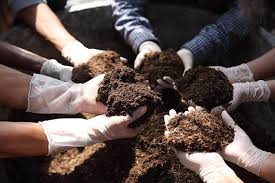
Ago . 17, 2024 08:21 Back to list
Choosing the Best Nitrogen-Rich Fertilizer for a Lush Lawn
The Importance of Lawn Fertilizer with Nitrogen
A lush, green lawn is a source of pride for many homeowners, and achieving that sought-after aesthetic often requires careful attention to lawn care practices. One of the most crucial components in maintaining a healthy lawn is the use of fertilizer, particularly those containing nitrogen. This essential nutrient plays a vital role in promoting growth, enhancing color, and maintaining the overall health of your grass.
Understanding Nitrogen’s Role in Lawn Care
Nitrogen is a key macronutrient that significantly influences plant growth. It is primarily responsible for the synthesis of chlorophyll, the compound that gives plants their green color and plays a crucial role in photosynthesis. With adequate nitrogen levels, grass can absorb sunlight more efficiently, leading to improved energy production and growth.
In addition to promoting lush foliage, nitrogen also stimulates the development of new leaves and shoots. This is particularly important in the spring when grass is coming out of dormancy. By applying nitrogen-rich fertilizer during this period, you can encourage rapid growth and green-up of your lawn, allowing it to outcompete weeds and resist diseases.
The Different Types of Nitrogen Fertilizers
There are two main types of nitrogen fertilizers used for lawns quick-release and slow-release
.1. Quick-Release Nitrogen Fertilizers These fertilizers provide an immediate boost of nitrogen to the grass. This type of fertilizer is effective for rapid greening and is often used for quick fixes. However, the effects may wear off quickly, leading to the need for more frequent applications. Common forms include ammonium sulfate and urea.
lawn fertiliser with nitrogen

2. Slow-Release Nitrogen Fertilizers These fertilizers gradually release nitrogen over an extended period, providing even nutrition to the grass. They require less frequent application and promote steady growth, helping to maintain a healthy lawn throughout the entire growing season. Examples of slow-release fertilizers include IBDU (isobutylidene diurea) and coated urea products.
How to Apply Nitrogen Fertilizer
When applying nitrogen fertilizer, timing and technique are essential for maximizing its benefits. The best times to fertilize your lawn are during the active growing seasons early spring and fall. Fertilizing in the spring encourages thick growth, while fall applications help to strengthen the root system before winter dormancy.
Before applying fertilizer, it’s wise to conduct a soil test. This test will determine the existing nutrient levels in your soil and help you decide how much nitrogen is needed. Over-fertilization can lead to excessive leaf growth, making the lawn more susceptible to pests and diseases.
When applying the fertilizer, ensure even distribution across the lawn to avoid burning the grass and causing uneven growth. Using a spreader can help achieve an even application. After application, watering the lawn lightly can help activate the fertilizer and promote absorption into the soil.
Conclusion
Incorporating a nitrogen-rich lawn fertilizer into your lawn care routine is essential for achieving and maintaining a beautiful, healthy lawn. By understanding the role of nitrogen, choosing the right type of fertilizer, and applying it correctly, you can ensure your grass thrives throughout the seasons. A well-fertilized lawn not only enhances the appeal of your home but also contributes positively to the environment by improving air quality and supporting biodiversity. Investing time and effort into your lawn care will yield gratifying results in the form of a vibrant, green landscape.
-
10 10 10 Fertilizer Organic—Balanced NPK for All Plants
NewsJul.30,2025
-
Premium 10 10 10 Fertilizer Organic for Balanced Plant Growth
NewsJul.29,2025
-
Premium 10 10 10 Fertilizer Organic for Balanced Plant Growth
NewsJul.29,2025
-
Premium 10 10 10 Fertilizer Organic for Balanced Plant Growth
NewsJul.29,2025
-
50 Pound Bags of 13-13-13 Fertilizer for All Plants – Bulk & Organic Options
NewsJul.28,2025
-
High-Efficiency 15-30-15 Granular Fertilizer for Healthy Crops
NewsJul.28,2025
